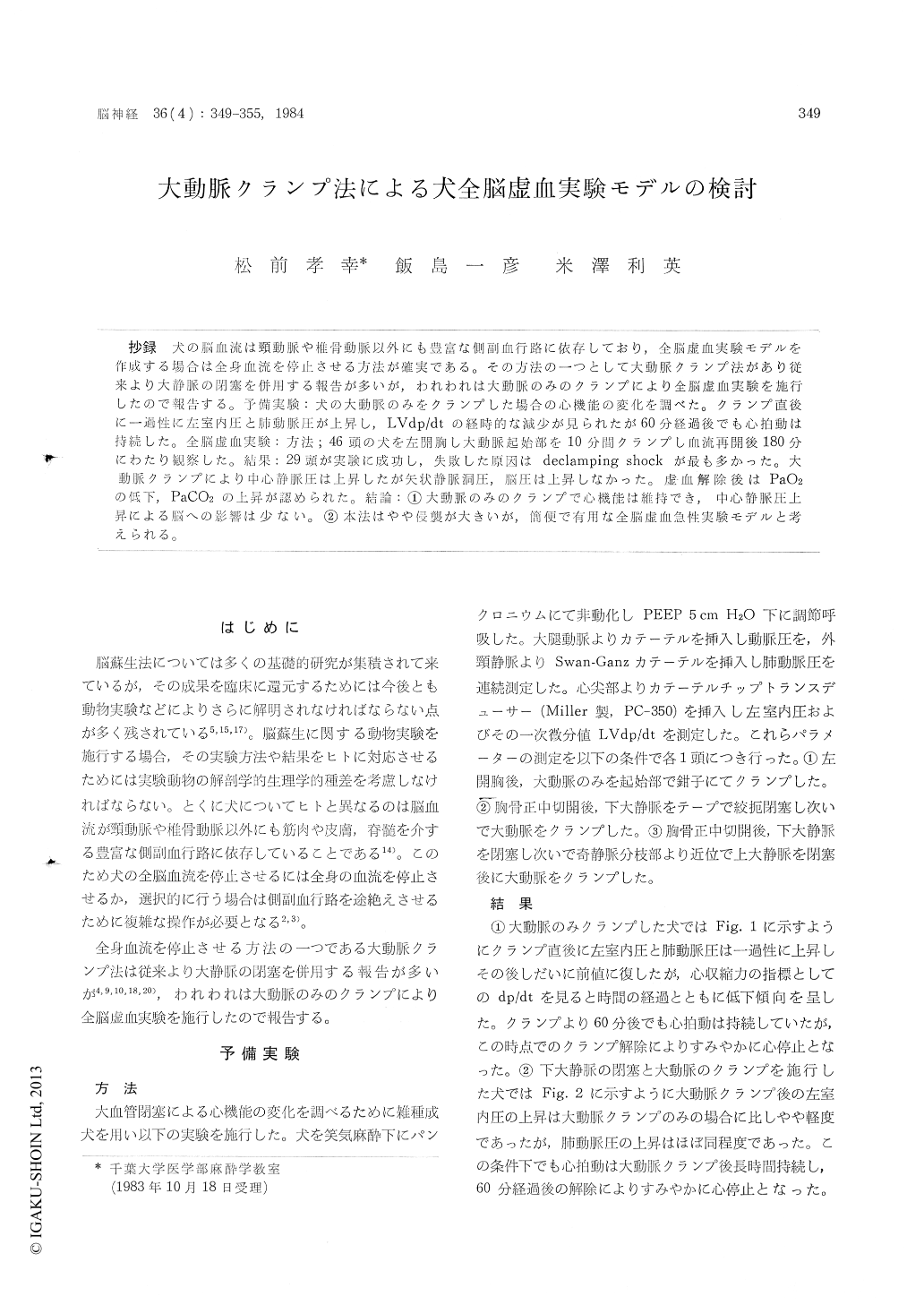Japanese
English
- 有料閲覧
- Abstract 文献概要
- 1ページ目 Look Inside
抄録 犬の脳血流は頸動脈や椎骨動脈以外にも豊富な側副血行路に依存しており,全脳虚血実験モデルを作成する場合は全身血流を停止させるカー法が確実である。その方法の一つとして大動脈クランプ法があり従来より大静脈の閉塞を併用する報告が多いが,われわれは大動脈のみのクランプにより全脳虚血実験を施行したので報告する。予備実験:犬の大動脈のみをクランプした場合の心機能の変化を調べた。クランプ直後に一過性に左室内圧と肺動脈圧力が上昇し,LVdp/dtの経時的な減少が見られたが60分経過後でも心拍動は持続した。全脳虚血実験:方法;46頭の犬を左開胸し大動脈起始部を10分間クランプし血流再開後180分にわたり観察した。結果:29頭が実験に成功し,失敗した原因はdeclamping shockが最も多かった。大動脈クランプにより中心静脈圧はは上昇したが矢状静脈洞圧,脳圧は上昇しなかった。虚血解除後はPaO2の低下,PaCO2の上昇が認められた。結論:①大動脈のみのクランプで心機能は維持でき,中心静脈圧上昇による脳への影響は少ない。②本法はやや侵襲が大きいが,簡便で有用な全脳虚血急性実験モデルと考えられる。
Canine cerebral blood flow is supplied not only through carotid and vertebral arteries, but also through rich network of collaterals. Therefore, it is said that total body arrest is requested to as-sure the global brain ischemia. The global ische-mic models, reported previously, were by the simultaneous occlusion of aorta and vena cava. In our model, however, the gloval cerebral ischemia was producted by clamping only the ascending aorta.
Cardiovascular changes such as increases in left ventricular and pulmonary arterial pressure, and decrease in left ventricular dp/dt followed after ceasing of ascending aortic blood stream.
The heart continued to beat during 60 minutes of the clamping. Despite of increased central ve-nous pressure, sagittal sinus pressure and intra-cranial pressure remained unchanged during the aorta clamping. Ten-minutes of total cerebral ische-mia was produced in 46 dogs and successful studies on cerebral and systemic variables were carried out in 68% of them.
The method of clamping the aorta without oc-clusion of vena cava seems to be unsuitable for long term survival study because of severe loading of lung circulation. However, we conclude that this simple model is of great use for short term experiment on global brain ischemia.

Copyright © 1984, Igaku-Shoin Ltd. All rights reserved.


